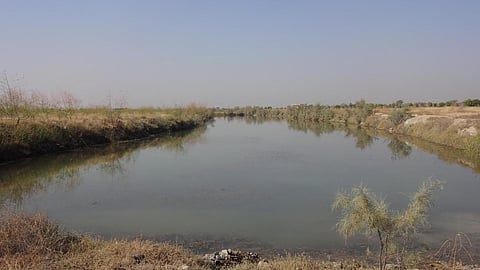
- Topics
- Feature
- Opportunities & Events
- Data
- Hindi Portal
- Topics
- Feature
- Opportunities & Events
- Data
- Hindi Portal

As you drive from Jodhpur to Jaipur, the barren and desolate terrain underscores the harsh environment. The land is bleached due to high soil salinity, and there are no water sources in sight. This guarantees that there is no vegetation other than weeds like Israeli babool (akesia tortlis).
But enter into the 95-acre campus of the Aravali Institute of Management and you will wonder if you're still in the same area! There are many water bodies (15 lakes, to be precise) as well as an admirable green cover, but that wasn't always the case.
Until 2005, this land at Kaparda village was in tune with its surroundings. Soil salinity, which was three times that of the sea, not only killed the plants but also ate into cement structures thus making it difficult to construct anything. That the campus today has 28,000 square feet of built up space including a library, computer centre, classrooms, offices and guestrooms, is not a miracle. It's the result of an eight-year-long process involving experiments with construction materials, diverse plantations and water harvesting techniques. Prof Varun Arya, Director of the Institute, anchored the entire programme.
"First, we dug six lakes to hold rainwater but the water would soon turn saline. It was only by the sixth year that water remained sweet throughout the year. Plantation was done using multi-layered jumbo bags, filled with sweet soil and cow dung manure, to reduce inflitation of salt", says Arya. The trees were also guarded with jute bags to be sprinkled with water during the harsh summer season. Local salt-tolerant varieties, environment-friendly neem and peepal, and fruit-bearing trees were preferred.
For construction purposes, traditional 'mudia' lime was used up to the plinth level. "Salt can't stand cement but it's a very good friend of lime. However, use of lime would have increased the construction cost so we used it only till plinth level because soil salinity does not go beyond that. The success of this experiment was evident three years back when several structures in the neighbouring village fell down during a flood but our walls withstood the pressure", Arya says.
With 20.477 square km of land affected by salinity in India, this success story from Kaparda offers a few lessons in restoration that can be put to use elsewhere.
Watch the video to understand how this wasteland was reclaimed.